What Would The World Look Like If Humans Vanished? A New Shanghai Exhibition Imagines The Possibilities
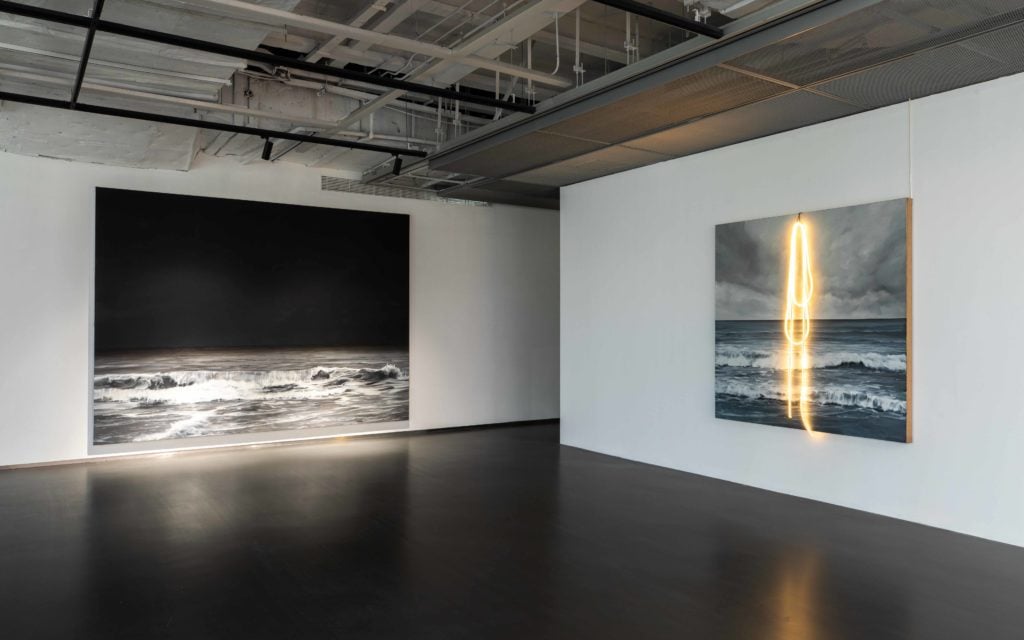

Artnet Gallery Network

In the exhibition “Aftermath” currently on view at Shanghai Gallery of Art, the American-Korean conceptual artist Michael Joo and the Chinese artist Gao Weigang have co-created a suspended theater in which their joint non-linear narrative unfolds. This “aftermath” is neither temporal nor spatial—it is a state attempts to construct an experience of nothingness, transience, and fragmentation, one which immerses viewers in scattered time segments roll in and retreat like the tide.
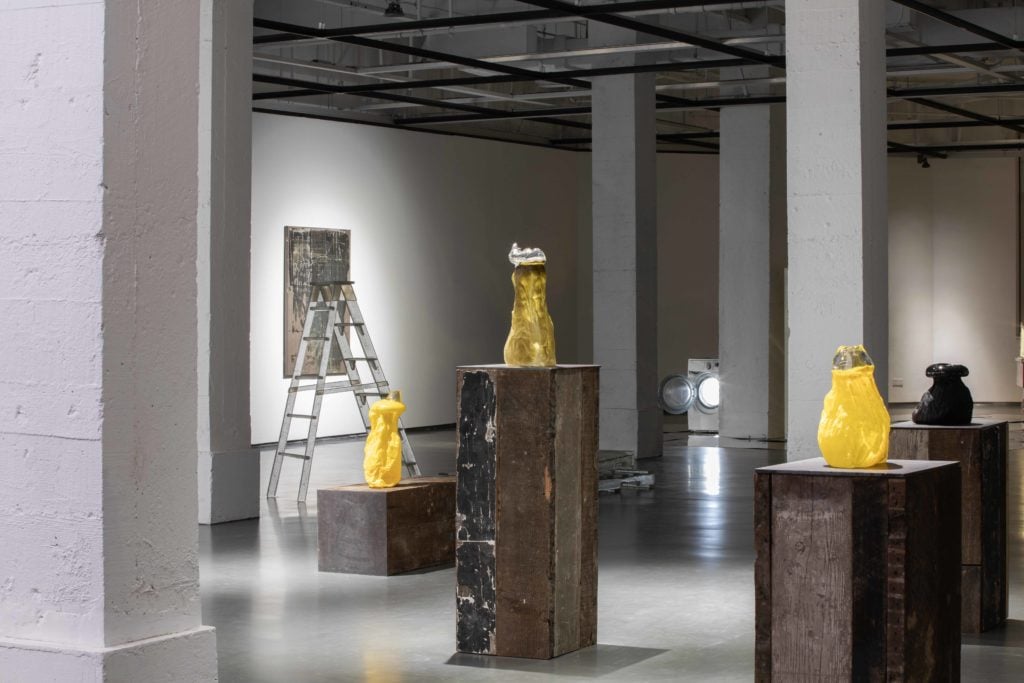
Installation view of “Aftermath,” 2019. Courtesy of Shanghai Gallery of Art.
Here, the landscapes are ruins, and human beings, the lead “actors” are missing. In this historic building on the Bund, the world has become detached from the linear time frame of human history, and instead, revels in chaotic disorientation, and the natural phenomenons and energy sources that have existed for hundreds of millions of years are segmented, converted, and attached to the artworks.
While Gao Weigang constructs fragmented, post-modern narratives using everyday objects (ready-mades), landscape paintings that escape subject-and-objective dualism, and installation pieces that he’s displayed scattered around the space, Michael Joo’s work mixes and experiments with these concepts in almost alchemical processes of multiple, complex transformations of his artistic science experiment. Joo summarized the juxtaposition, saying,“Gao Weigang’s work creates an environment—not in the sense of a place in a certain time frame, but one that embodies a state of consciousness—which has allowed me put to place some of my experimental objects inside [of that consciousness].”
Gao presents seascapes and mountain-scapes at a scale that invites the viewer to be physically present within the canvas, while simultaneously creating a sense of anxiety that seems to continue the idea of Caspar Friedrich’s “romantic sublime” in the painting Wanderer above the Sea of Fog, only that the figure in Wanderer, who faces the magnificent and ominous natural scene, is replaced by the viewer. But the sublime here alludes to an Eastern view of the universe or nature—a perspective that removes all human subjective: the universe exists without human projections.
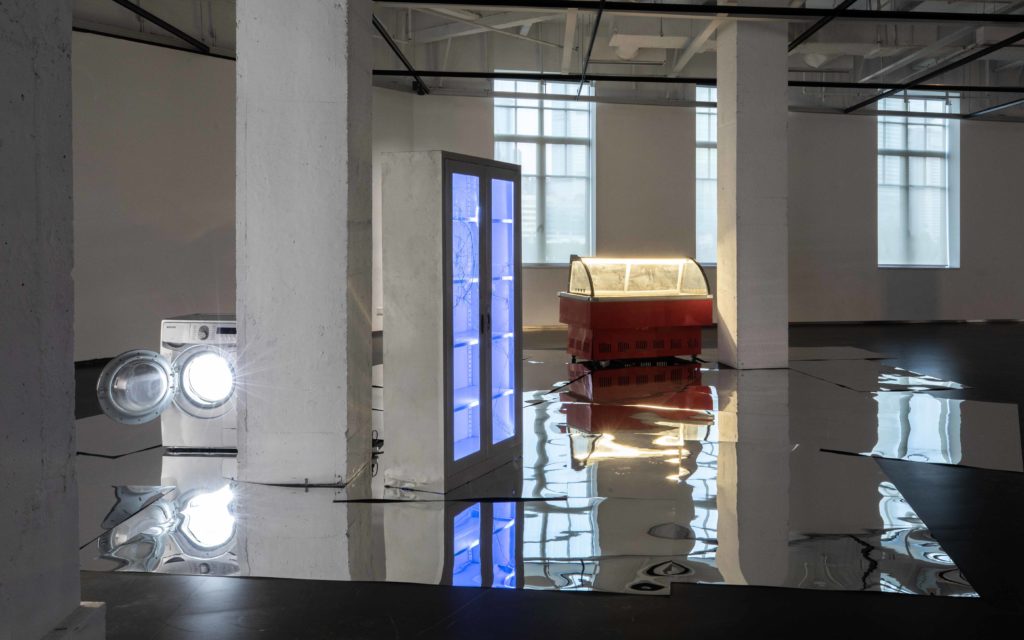
Installation view of “Aftermath,” 2019. Courtesy of Shanghai Art Gallery.
Gao explained of his seascape, The Land of Innocent: “This is a scene that only exists somewhere in my memory. The wave has been lapping the shore for thousands of years, composed, and dispassionate, no matter what emotions people have when they face it. Whether people find it beautiful or ominous, or if they find the moment to be so important for them, for the wave, it only exists.”
And while human beings are absent, their traces are everywhere. The scattered objects through the exhibition carry forgotten stories and absurd scripts; made by people, used by people, and they eventually buried their original purposes after the people have left the “stage.” These objects have become evidence, carriers, or entrances to an immaterial world.
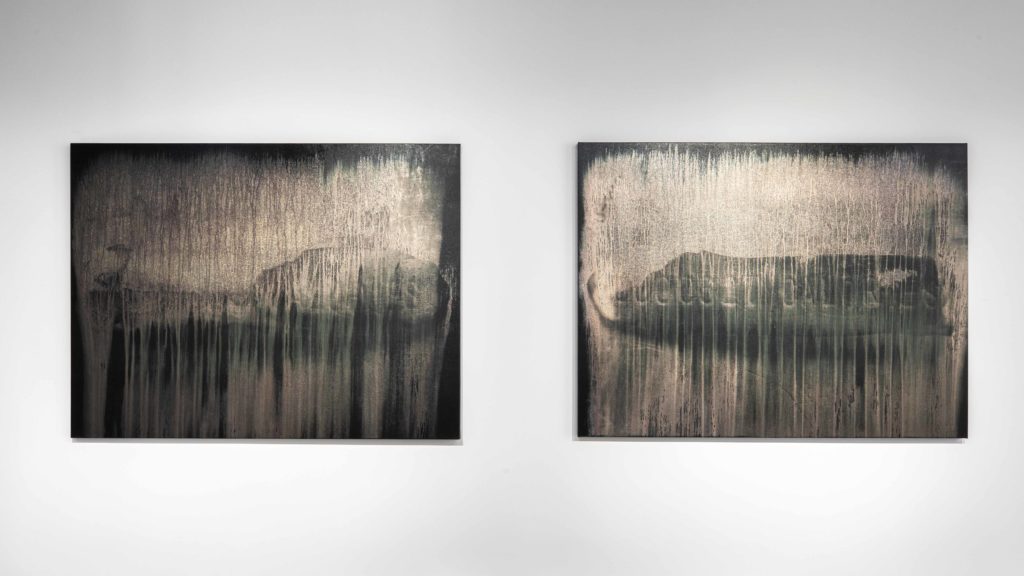
Installation view of “Aftermath,” 2019. Courtesy of Shanghai Art Gallery.
Compared with Gao Weigang’s works, Michael Joo’s silver nitrate paintings also form a kind of search. The blurred images formed by chemical substances are covered up using various techniques and reactions, in the same way the human memory is altered by time, with objective, historical moments with subjective realities blending together. His choice of materials is important. He said, “Like silver nitrate, images are ‘toxic’ . . . Images are both presentable and inexpressible, just as silver as a material both camouflages and reflects.”
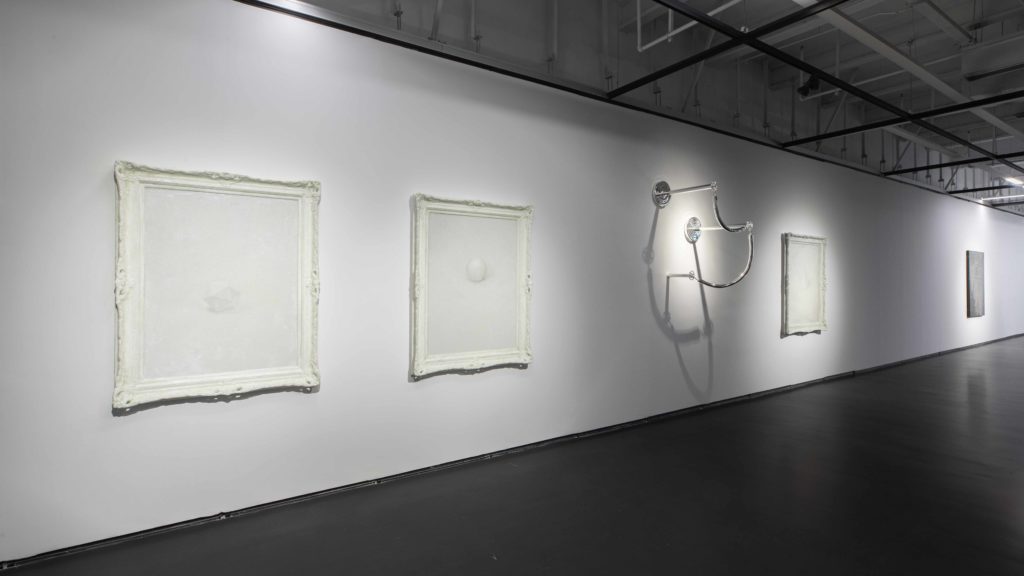
Installation view of “Aftermath,” 2019. Courtesy of Shanghai Art Gallery.
His sculpture series, “Single Breath Transfer,” also attempts to suspend moments of transformation. The artist blew air into bags that he collected from the streets, and a glassblower would breathe into the shaped molds to produce final works. Thus, the artist connected his body with the works that carry exchanged breaths of two people. The moments of exchange and transformation were eventually shaped into the memory of the art pieces. Through a series of chemical and material reactions, Joo constantly explores uncertainty about the natural world. From silver nitrate, carbonized mushrooms, blown glass, to mirrored borosilicate, his science-based, post-aesthetic art is both visually powerful and intellectually challenging.
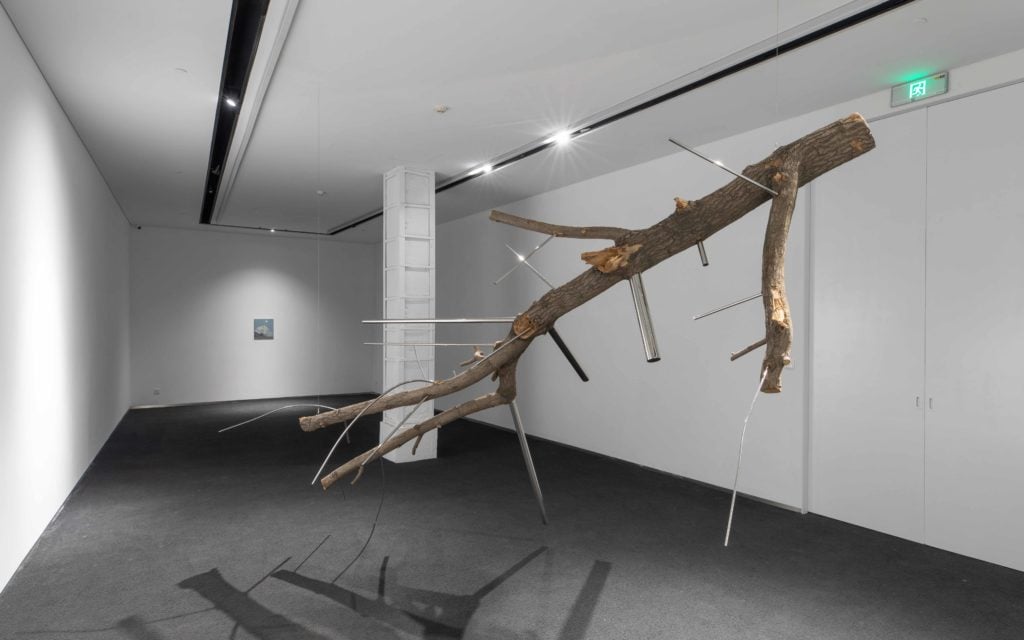
Installation view of “Aftermath,” 2019. Courtesy of Shanghai Art Gallery.
“Aftermath” at its first glance is like a trip to Pompeii. At the split second when the volcano erupted, thousands of people died without warning. The crowds were buried in volcanic ash, which cooled to form thousands of human-shaped “shells” that preserved bodies in the midst struggles. These remnants have given physical form to abstract concepts like death and disaster, which are otherwise difficult to represented. Yet, here it is clear nature has no interest in articulating these human concepts —the volcanos, just like the wave in Gao’s Land of Innocent, indeed, do not give us a thought.
“Aftermath” is on view at Shanghai Gallery of Art through January 8, 2020. Written by Siyu Li, translated by Cindy Zhu, Sophia Schiebel